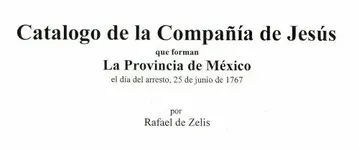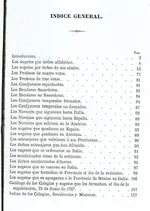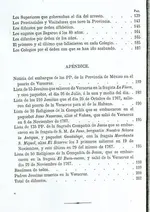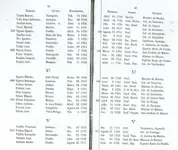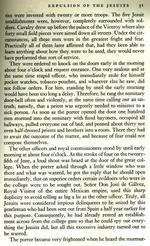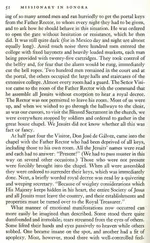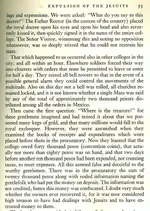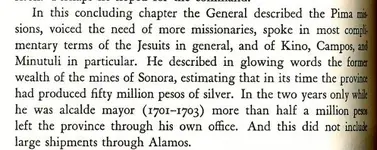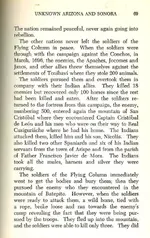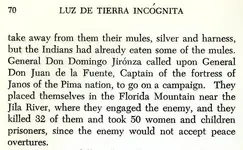Hola amigos,
At the risk of alienating everyone reading this, yes it is another
extremely long post; I would ask your indulgence but for anyone who does not wish to wade through such a long post, just skip ahead and I won't be offended.
Cactusjumper wrote
Without their Native American "slave labor", there could be no Jesuit treasure. For a great read on how the Native Americans were actually decimated, I would highly recommend "Guns, Germs, and Steel", by Jared Diamond. Chapter 11 is aptly titled: "Lethal Gift Of Livestock".
It is debatable whether the Jesuits could have accumulated any 'treasure' without the use of forced labor and <
literal> slaves brought from Africa; their other businesses were a dazzling array of different undertakings from banking and lending, to landlords (rental incomes) almost any sort of business that existed in colonial times you can find a Jesuit example of. Then there are the gifts and endowments, which could be sizable. Individually, I have no doubt that any particular Jesuit priest or brother could be literally dirt-poor, but this was not the case with the Order.
Cactusjumper also wrote
There was plenty of precious metal in the neighborhood however and it may be that some of it was discovered and mined.
If you note in my post where I used that extract, I stated,
So even the Catholic historical society was willing to admit of the possibility, however doubtful, that some precious metal may have been discovered and mined.
Not that they openly admitted it, but they granted that it was POSSIBLE. That is a
major concession for the Catholic sources, when virtually all Jesuit sources deny all allegations of mining AND treasures outright. I don't think
San Xavier del Bac was a mining center at any time.
Cactusjumper also wrote
I don't see how any of that applies to the Jesuits, and especially those that were there at earlier dates. Everything that you have quoted, other than your opening statement, deals with the Franciscans and their churches.
If you have read that chapter, it is all about Jesuit history of San Xavier del Bac, with only a passing mention of the Franciscan period. I will come back to this in a moment.
Cactusjumper also wrote
If you are addressing me, let me repeat.......I am aware that some Jesuits may have been involved, in some manner, with mining. It seems to me that those few cases which can be documented, do not account for the treasures that are being alleged.
How are you quantifying the "treasures that are being alleged"? By the description of some $40,000 in silver, adorning the altar at Bac? At least some of the beautiful and costly ornaments at Bac, were brought from Tumacacori. To me, and I am sure to many other treasure hunters, that $40k <or over $600,000 today> would be quite a treasure. As the price of silver in the early 1800's was at $1 per ounce, we are talking about 40,000 ounces of silver just on the altar. The Jesuits (and other Orders) were operating mines in Mexico, including in Sonora; these mines produced gold, silver (especially) and copper; so where did that output go? The Spanish royal authorities stated that all of the Orders were heavily involved in the contraband trade with the English and Dutch, ,<see Royal Cedula dated Feb 2nd, 1730, Fondo Luis Guitierrez Canedo, Reales Codulas I, Carpeta 5-9, document 239, cited in "Wealth of the Jesuits in Mexico, mentioned earlier> Are you citing the vast amounts listed in the Molina document? Why should that amount (as astonishing as it is) be incredible as an output from a group of mines, worked over a period of years (we do not know how and when the metals output was being shipped out) and probably accumulated for shipment when it would be possible to do so without being caught? Clearly, the mines being worked prior to 1768 were doing so quite "under the radar" and not openly as the others we can document, is it logical to suppose that their output would then be openly transported south to ship out on Spanish ships?
Side note but that 'handful of cases' which show documented Jesuit ownership (and operation) of mines in Mexico, except for the college of Leon which only owned one mine I can find, the Jesuit California Mission fund owned mines (plural) the Jesuit college of Zacatecas owned mines (plural) and the Jesuit college of San Jose owned mines (plural) so it is more than a rare thing, not sure I would quantify them as a "handful". This story of illicit Jesuit mining in Pimeria Alta (and even outside that area) fits a pattern of Jesuit activity elsewhere in the New World.
Are you saying that the silver mines from which this silver originated (as alleged) were not discovered and worked until the Franciscans arrived? The silver mines in the Santa Ritas, were described as long-abandoned when the Robles expedition found them in 1817. The mines around Arivaca were shut down in 1767, and not re-started for some time. The populations of the various Jesuit missions in Pimeria Alta were very largely Indians, not Spaniards or even mestizo. Perhaps we ought to pin some dates here? I keep getting the impression that you (Joe) are taking the claims of Jesuit mining/treasure as being directly linked to the arrival of Kino, which will not fit the evidence.
1687 Father Kino (or Kuhn) arrives in Pimeria and begins his career of exploration and founding of missions there. These buildings (except perhaps Dolores and Bac) were of earthen construction and liable to deteriorate.
1711 Father Kino dies, his missions fall into disrepair
1725 Bishop Crespo (or Crespi) visits Arizona missions and sends full description to the king; it is during this visit that the incident occurred in which the bishop complained about the lack of salt cellars, and the "brothers" immediately set to find a silver deposit and cast a pair of large heavy silver salt cellars; this mine is named "Salero". I doubt that any remarkable silver or gold mines had been discovered or worked by the Jesuits prior to this date;
1730 The Planchas de Plata (or Bolos de Plata) silver placer is discovered, resulting in a "rush" of Spanish prospectors to that district; The Indian discoverer is dispossessed of the mine. The fame of this discovery reaches all the way to Europe.
*All Orders in Mexico believed by Royal authorities to be deeply involved in illicit contraband trade; The silver rush of Spaniards only lasts a few years however when the surface deposits played out quickly, leaving Pimeria Alta to the Jesuits.
1751 the Pimas rebel, resulting in several of the missions being abandoned by the Indians for several years including Tumacacori and Guevavi, but not Bac. It is probable that the mines were shut down at this time
1764 Nentig publishes "Rudo Ensayo" in which he states there are several silver mines and one gold mine in the vicinity of Guevavi, which are not being worked. He describes the mission churches at this time; <this has been posted several times, but the DATE is the key to consider>
All the churches have side altars, appropriate ornaments, and chalices of silver and in three instances of gold. There are other sacred vessels such as ciboriums, monstrances, large and small candlesticks and crosses, and nearly all churches have silver statues of the Virgin, organs, bassoons, oboes, and bells, not only at the principal missions but at the dependent ones as well.
<Nentvig, Rudo Ensayo> *This is how they appeared in
1764, not 1697 or 1711; it would be a thin case to try to say this is how the churches were adorned
when Kino was building them.
1767 Jesuits expelled; father Och described the cathedral church in Puebla as having an exceedingly rich treasure in its gold and silver church appointments, writing from memory.
1768 Franciscans arrive
1772 Bishop Reyes visits Tumacacori (and other mission) his description is interesting;
In this village they have a church and house for the Missionary devoid of all ornament and furnishing.
* So, in 1764, all the missions including visitas were richly ornamented, but by 1772 it had largely vanished. Hmm, so what changed, other than Jesuits left and Franciscans arrived?
1773 Guevavi permanently abandoned, Tumacacori raised to main mission
1774 Anza reports that Arivaca pueblo has been abandoned since 1751 revolt
1776, <May 24> Don Felipe Velderrain reports that the Apaches had carried away everything of value from Tumacacori, nothing remained.
1817 Robles expedition to the Santa Ritas, reports old mines long abandoned & extreme danger from hostile Apaches *This could well be when the location of the Salero mine became known to the Franciscans, so it is logical that they re-opened it soon after.
1827 Franciscans expelled
So if you are attributing the mining and ore processing to the Franciscans, when did it start, when did it end, and whom had been mining in the Santa Ritas before 1817? Why did the mines around Arivaca shut down in 1767? There was no Pima rebellion that year, and no serious Apache raids either.
Cactusjumper also wrote
Once again, let me concede that the Jesuits would, when they could, hide the church "ornaments"......etc. in times of trouble with the Native Americans. If you believe that equates to stacks of gold bars and chests of precious jewels, quien sabe?
My paragraph earlier addresses this in part; that the ornaments do in fact amount to a sizable, valuable treasure and would be well worth finding today. As for the stacks of gold bars (and silver) we have only scattered reports as to what happened to some of it; but it is logical that precious metals produced beyond what was used to ornament the churches and visitas would be cast into some form which could then be shipped. When you consider that one mine might produce a great deal of silver (especially when the ore is rich in character) the amount produced over years of operation can be staggering - for example, for just ONE mine in the Alamos district (Sonora) the Quintera mine, by the record produced some 48 million ounces of silver; true this one has a long history from the colonial days but it was not in operation in 1910 when that figure was published. (Mining & Engineering World, vol 32, pp 220-221) Now consider what a group of mines could produce, over say three years time, if accumulated?
I can't address any "chests of precious jewels" other than to say that it is not impossible, considering the impressive business in which the Jesuits were involved in the Philippines and Asia, of which much of the missionary effort in our southwest was done with an eye to support that trade by providing ports of call and safety for the Manila galleons as well as the ships owned and leased by the Jesuits themselves. So yes it is possible there could be chests of pearls, chests of emeralds and rubies from the Golden Triangle, even ivory from Africa. As I have no sources that directly mention these chests of precious jewels being present in Pimera Alta, it is pure speculation for me as to their existence. I have no doubt that bars of precious metals were in fact produced, and most probably were secreted for smuggling out of the country when feasible.
As the dates on the Molina document appear to be far too early for our timeline, <1598 to 1658> consider this;
The Jesuit mission program began in the 1590s in the Pimeria Alta, which included Sonora
<Mission Archaeology - Annual Review of Anthropology, 27(1):25 by E Graham - 1998>
...the Jesuits were active in Sonora from an early day, and much of that early activity is not well documented.
If it seems that I am expending a LOT of words and time on this subject, it is due to my being long-winded, that I value your friendship and your opinion, and am making every effort to sway your opinion. It is also a rather sore point, for we have a number of modern historians whom not only criticize articles and books on Jesuit lost mines and treasures (of which I am an author of, articles anyway) but even ridicule them and the treasure hunters who seek them. These "legends" are NOT based on barroom tales spun by drunken prospectors, nor on vicious attacks by enemies of the Jesuits. <Anyone who criticizes the Jesuits apparently is classed by them as "enemies" so I have little doubt as to where I would stand> so, as we know that our discussions here and in other threads on much the same topic are rather widely read, <
over 11,000 hits, which can't be just those of us whom are actively posting> I have been taking advantage of this readership to present the "prosecution" case against the Jesuits, and to show that our "legends" are based on reality. To a treasure hunter it makes little difference if a lost treasure is Jesuit or Franciscan or Spanish, all have a deep historical impression on us, but I hope that our Jesuit apologists, the skeptics and historians whom have been ridiculing the very notion will take some notice of what has been presented. Anyway as much as I do value your opinion Joe, it will not hurt my feelings if you are not swayed and hold your trust in those same historians. They have got a lot right, after all. I will TRY to be much more brief in future, especially in this thread.
Side note but I hope you are not suffering with the heat there amigo, from what info I get, the temps have been triple digits for some time now. I hope you are staying close to the air-conditioner and fans, and are not trying to get outdoor work done in the heat of the day. It has been plenty hot here, can't imagine if it were 20 degrees hotter and trying to fix fences etc in the Sun.
Good luck and good hunting to you all, I hope you find the treasures that you seek.

Roy ~ Oroblanco




